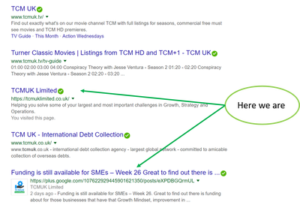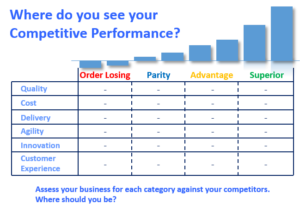This week I was contacted by a Corporate Merchandise Company, a cold call asking for me. When I picked up they went straight into overdrive asking me about my company…it’s a debt collecting business isn’t it?
Me??????????? NO.
My brain starts going a million miles an hour (this is a bad opening, their process is way off of how to truly build a relationship, they’re not listening),
As I piece together his opening statement “so you’re a debt collecting agency” I’m thinking, so you did a google search for “TCMUK” then picked the first one, “TV channel” no wouldn’t be that, next one nah!!!!! It must be the third one…
What a PRIME example of how not to know your customer avatar…..I actually appear third and fourth, but they still picked the wrong one????

Sales 101
Know your Customer. (your avatar)
What they want and what motivates them to buy. Clarify who your market is, What is it your perspective customer is looking for but doesn’t perceive to be available. Where do they hang out?
Develop your Marketing Message
Market – Message – Media
Don’t just cold call, shout at them down the phone, then get abusive.
It doesn’t have to be in order but it is certainly a PRIORITY knowing your customer avatar.
Now this business does look as though they’ve had some success (financials), but their customer reviews/feedback is 1.4 stars out of 5, and reading some of them
“Would never use this company again! Used them once for diaries for clients and ever since we have been bombarded with hundreds of phone calls, despite telling them we would contact them should we ever need anything in the future. Constantly having to put the phone down on them. Safe to say we will not be using *&^%$ again. There is persistent and then down right harassment. STAY AWAY FROM THIS COMPANY!”
They certainly have room for improvement, 1.4 stars out 5!!!! Imagine what they could achieve with a completely different customer orientated approach. I think there will be a KPI driving that Sales behaviour some-where. Wrong KPI, Wrong Behaviour. (KPI – key performance indicator)
Getting and Keeping Customers
Focus on Customer Satisfaction then Profitability, DON’T focus on Profitability at the cost of Customer Satisfaction, you will have limited success and you won’t be in business for very long.










